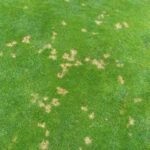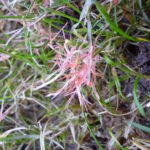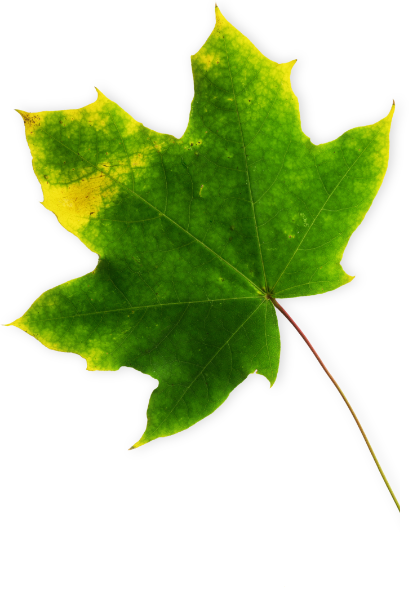Having a healthy, lush lawn is the dream of most homeowners. To get to that point, you may have some obstacles to hurdle. Lawn diseases, unfortunately, are one of those obstacles. In order for disease to occur there must be a host, a pathogen and the right type of environment. Here are some of the most common spring lawn diseases you may run into:
Dollar Spot
 Dollar Spot is one of the most common turf diseases in Massachusetts. This common spring lawn disease consists of small light brown or straw-like colored spots in your lawn, usually the size of a silver dollar. It is favored by warm days, cool nights and heavy dew. When dew is present you may find white, cottony looking strands which is known as mycelium. This is a symptom that lets you know the disease is active. Some cultural ways to prevent this disease is having adequate fertilization, watering deeply and infrequently and aeration to break up any thatch and allow better air movement into the soil. This disease can also be controlled by fungicides, whether preventatively or curatively.
Dollar Spot is one of the most common turf diseases in Massachusetts. This common spring lawn disease consists of small light brown or straw-like colored spots in your lawn, usually the size of a silver dollar. It is favored by warm days, cool nights and heavy dew. When dew is present you may find white, cottony looking strands which is known as mycelium. This is a symptom that lets you know the disease is active. Some cultural ways to prevent this disease is having adequate fertilization, watering deeply and infrequently and aeration to break up any thatch and allow better air movement into the soil. This disease can also be controlled by fungicides, whether preventatively or curatively.
Necrotic Ring Spot
Necrotic Ring Spot (aka: Fusarium Blight), is a soil borne disease that infects the roots of grass. This is a disease where the pathogen is active in the spring, but symptoms won’t be seen until the warmer weather. First symptoms are small, 1-4 inch, light green spots which grow into patches up to 3 feet. The infected turf will be reddish brown and fade into a straw-like color. Aerating will help promote deep rooting; in conjunction with deep and infrequent watering will help prevent this disease. Fungicides are also available.
Red Thread
 This disease can occur any time during the year, but usually in spring and fall when the weather is cooler. Exactly as the name states, Red Thread appears as a “red thread” on grass blades and is visible to the naked eye. Keeping a regular fertilization program and watering earlier in the day may help prevent red thread. Fungicides are usually not needed, but are an option.
This disease can occur any time during the year, but usually in spring and fall when the weather is cooler. Exactly as the name states, Red Thread appears as a “red thread” on grass blades and is visible to the naked eye. Keeping a regular fertilization program and watering earlier in the day may help prevent red thread. Fungicides are usually not needed, but are an option.
Summer Patch
Summer Patch is a very destructive disease. This disease starts by attacking the roots of grass in the spring when soil temperatures reach 65°F. Visible symptoms won’t be seen until the summer after considerable damage has been already done. Soil compaction, too much nitrogen, poor drainage, over-watering all encourage the disease. Some cultural practices to help prevent Summer Patch are:
- Deep and infrequent watering to help introduce healthy deep roots.
- Aeration will help reduce compaction
- Keeping a pH between 6.0 – 6.5
- Chemical controls are also a reliable choice.
If you encounter any of these spring lawn diseases or are still unsure what issue you may be dealing with in your lawn, we are here to help! We can have one of our Lawn Specialists inspect the area of concern to help diagnose and provide a solution. Please call us today at (
For additional reading and lawn tips, please check out our blog How to Get a Green Lawn This Spring!
